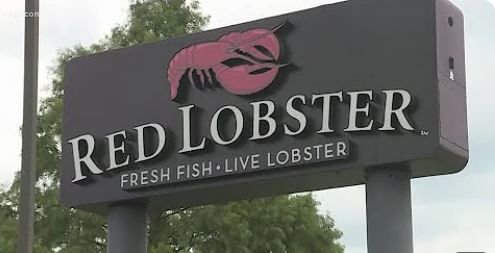Red Lobster, a chain of seafood restaurants, filed for bankruptcy due to difficult leases, expensive labor, and a botched limitless shrimp campaign.
The Orlando, Florida-based business listed $1 billion to $10 billion in assets as well as liabilities in its bankrupt appeal, filing for Chapter 11 protection on Sunday.
The filing permits the business to continue operations while it devises a strategy to pay back its creditors. In order to help the chain through bankruptcy, Red Lobster intends to turn over management of the business to its lenders, led by Fortress Investment Group, who has committed to providing $100 million in funding.

According to court filings, the offer to acquire the company is in the form of a chasing horse proposal, which means it will establish the starting point for Red Lobster’s assets and is open to higher bids should any become available in the upcoming weeks.
According to Chief Executive Officer Jonathan Tibus’s court filings, the restaurant chain has been declining for a number of years, with a 30% decrease in diners since 2019.
Tibus stated that although the company had recovered somewhat from the pandemic, sales had dropped precipitously in the previous 12 months.
It has a $76 million deficit in the fiscal year 2023. Customers have refrained from dining out due to inflationary pressures, and the company’s finances have been stressed by rising labor costs.
Red Lobster had a “material portion” of its leases at prices higher than the going rate.
The $20 “Ultimate Endless Shrimp” promotion was once a limited-time offer, but in May 2023 it became permanent, saving the corporation $11 million while customers gobbled up pricey platters of shrimp.

In 1968, Red Lobster began as a single restaurant in Lakeland, Florida. It developed massive expansion while nurturing a loyal customer base for its Cheddar Bay Biscuits in the 1970s and 1980s.
Over 550 restaurants are currently run by the corporation in the US and Canada.
The restaurant chain, which has been regulated by shrimp supplier Thai Union Group Plc since 2020, employs 64 million people annually and buys 16 percent of all rock lobsters worldwide and 20 percent of all lobster tails in North America.
Talks over an out-of-court agreement that would have given the creditors 80% of Thai Union and Red Lobster’s business broke through.
According to court documents, lenders gave Red Lobster $20 million in additional loans in February, but they wouldn’t have contributed further money without the owner’s approval.
In addition, Red Lobster announced that it is looking into the shrimp bargain, including the way it was advertised in eateries and whether Thai Union “exercised an outsized influence” on shrimp purchases.
In the US, the company employs 34,000 people, and in Canada, there are another 2,000. It closed ninety-three underperforming stores last week.